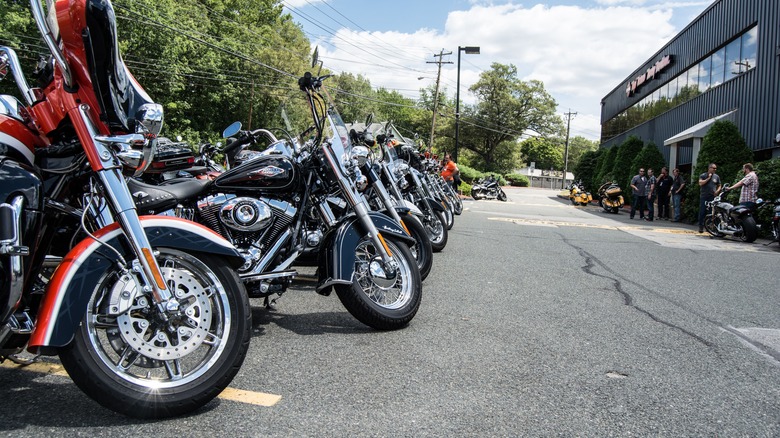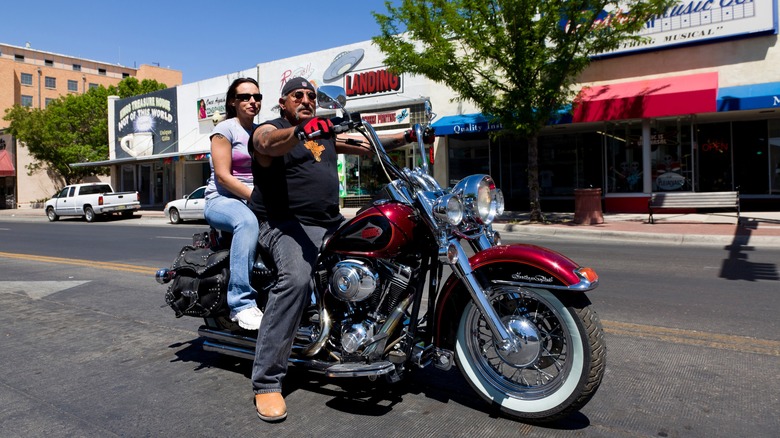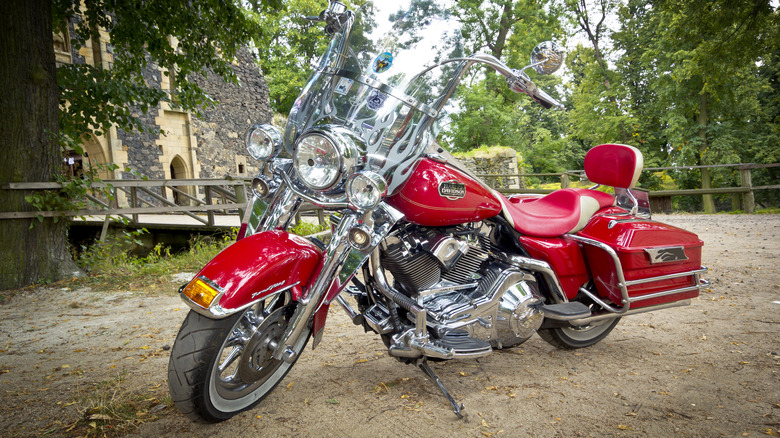What PSI Should Harley-Davidson Tires Be? A Guide To Recommended Tire Pressure
For nearly its entire 120-plus year history, Harley Davidson's operations have been headquartered in the spot on Juneau Avenue in Milwaukee, Wisconsin where founders William Harley and Arthur Davidson built their first factory, a small wooden shed in the Davidson family backyard. In that time, the company's motorcycles have covered countless millions of miles on the world's roadways and become some of the most famous motorcycles in movies & TV. The company has made some of the best motorcycles ever, although not every hog was a keeper. Whether you're on one of Harley's best or worst Harley Davidson motorcycles, it's important to have your tires properly inflated.
Deviation in either direction will change the width of the tire's contact patch and lead to uneven wear and handling problems. Under-inflated tires will feel sluggish while turning, and over-inflated rubber can make the ride rough and handling unpredictable. The sweet spot for most motorcycles, including Harley Davidson models, will depend on factors like rider weight, cargo load, and road and weather conditions. With that in mind, Harley Davidson recommends a cold tire pressure of between 32 and 42 pounds per square inch (PSI), depending on tire size.
Make adjustments for ambient temperature and conditions
You can consult the official Harley Davidson tire pressure chart for the specific starting tire pressure for your bike, but scroll down to see how much additional air to add when temperatures rise to 79 degrees Fahrenheit or more. You'll want to add one extra PSI to each tire at that point and about one additional PSI for every 10 degrees beyond that. You should check and adjust tire pressure at the start of every ride while your tires are still cold. Pressure will increase as tires heat up, and checking it at the end of a trip might prompt you to misguidedly bleed too much air from your tires. Tires can stay warm for as much as two hours after use, so be sure to wait at least that long before checking tire pressure.
You should always use a gauge to check tire pressure, but a visual inspection of your tires can reveal uneven wear, cuts, or blisters, all of which can indicate problems with tire pressure. It's normal to lose a little bit of air from your tires over time and in cold weather, but a consistent and significant loss of pressure can be a sign of compromised rubber or a faulty valve. If you're carrying a heavy load, it's best to inflate your tires to the maximum PSI specified in the chart above.
Lowering tire pressure can help with traction on loose surfaces
Lowering tire pressure can be helpful to increase traction when riding on dirt, snow, or other unstable surfaces, but watch your speed in these circumstances because your handling will be compromised. When it comes to lowering tire pressure on loose surfaces, listen to your bike's feedback. If traction is good at your road-going pressure setting, use that for dirt or gravel cruising. This will avoid the need to air back up when you return to the pavement and help preserve tire life. If your grip starts to slip, drop the pressure in both tires by a few PSI at a time until traction improves. It's smart to carry an air pump with you at all times, whether or not you plan to air down your tires.
Road tires are best run at or near their maximum allowable pressure, but off-road tires are made to run safely at lower pressures without suffering damage. For most riders and bikes, the ideal pressure for off-road riding will fall somewhere in the range of 22 to 26 PSI. As with riding on the road, though, this will depend on how much load is on the bike, the outside temperature, and other factors. If you have questions about the exact tire pressure you should run for your model under specific conditions, consult your owner's manual or call your local Harley Davidson dealership's service department.


